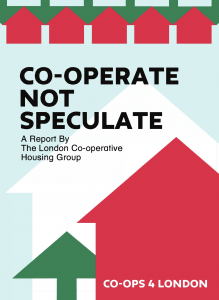Property speculation, together with the sustained attack on social housing that came with the 2016 Housing and Planning Act, are helping to create a city where only the privileged can live comfortably pushing out millions of Londoners on low incomes including 700,000 whose earnings are below the living wage. According to a study by the Centre for Economics and Business Research (Cebr, 2016) that’s one in three police and ambulance drivers, one in three care workers and 30 per cent of all our postal workers, cleaners and security staff. Social housing is not subsidised. It pays for itself. People in receipt of benefits are not a burden. They contribute almost five times the amount they receive in housing benefits to the economy.
What is a Housing Co-op?
Above is a map of over 300 housing co-operatives in and around London. Most of these co-ops were established in the late 1970s and early 1980s though some are more recent. Mutual housing co-ops are a unique form of social housing because they provide low-rent homes for people with secure tenancies. While private tenants in receipt of housing benefit risk losing their homes in London because of the £442 (£296 if single) a week benefit cap, co-op tenants are protected because rents are lower. Co-op tenant members collectively own and manage their homes; they are landlords AND tenants. Rents are low because they just need to cover the cost of the home – there’s no point in extracting a profit by increasing your rent above your costs when you are also the person paying the rent.

 Read our report on Housing Coops in London
Read our report on Housing Coops in London